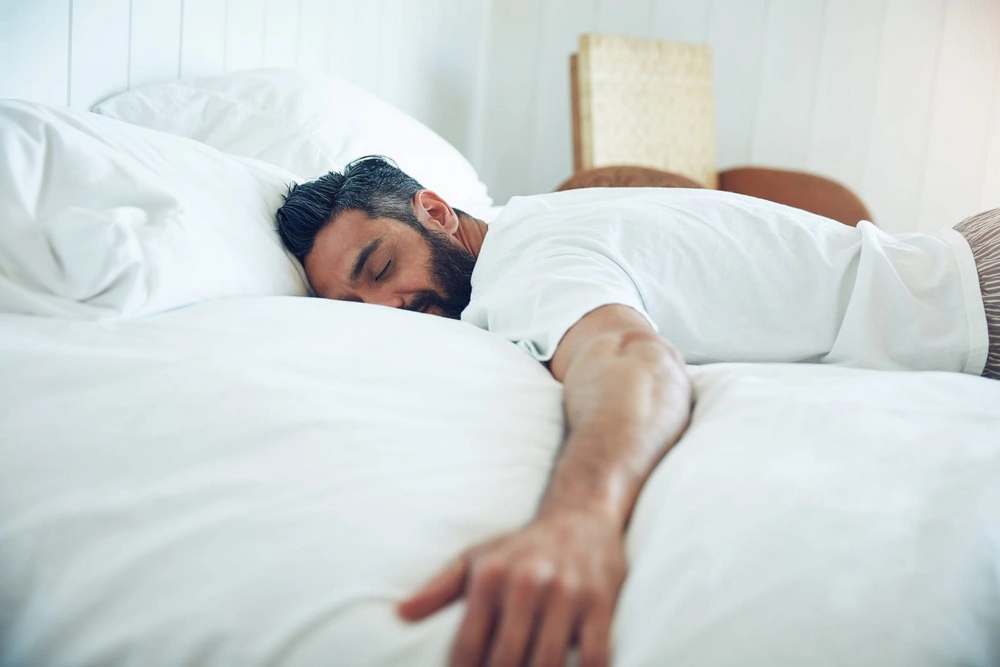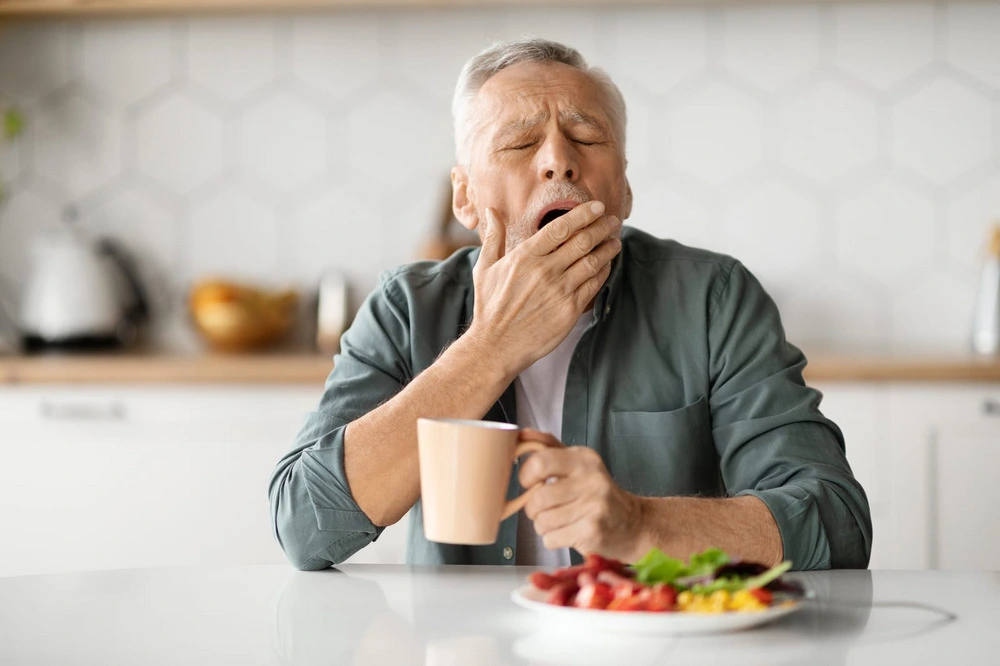The DSM classifies hypersomnolence disorder and narcolepsy as sleep-wake disorders. With idiopathic hypersomnolence vs. narcolepsy, you might think that they are the same as they are both categorized as sleep disorders. However, hypersomnia or hypersomnolence is when individuals sleep too much. By comparison, narcolepsy is a condition where individuals fall asleep outside of their control.
It’s important to understand the differences between sleep disorders because effective management comes down to an accurate diagnosis, which can’t happen if you don’t understand the key differences between narcolepsy vs. idiopathic hypersomnolence.
This article will focus on the causes and risk factors for narcolepsy vs. hypersomnolence.
Understanding Narcolepsy
Narcolepsy is a condition where individuals fall asleep unexpectedly and stay asleep. They don’t have control over when they fall asleep or how often they take naps throughout the day. Individuals who struggle with narcolepsy take naps regularly and have difficulty staying awake because they don’t get restorative sleep. They aren’t able to control REM cycles and get deep sleep.

This means that even if they do sleep an appropriate amount of time at night, they aren’t getting restorative sleep and waking in such a way that they feel rested, wide awake, and ready for their day. Even if they do feel rested, the same individual will very quickly start to struggle with daytime sleepiness and unexpectedly fall asleep outside of their control.
Understanding Hypersomnolence
Hypersomnolence is a condition where individuals sleep too much. It is the opposite of insomnia, and individuals who struggle with hypersomnia will sleep excessively, often taking naps during the day because of daytime sleepiness, but they have control over when they fall asleep and they get restorative sleep when they are able to sleep.
Narcolepsy vs Hypersomnolence: Key Differences
The key differences between hypersomnolence and narcolepsy have to do with prevalence, developmental differences, and symptom manifestation. Up to 10% of Americans get diagnosed with hypersomnolence, but only an average of 0.035% of the population gets diagnosed with narcolepsy.
Narcolepsy manifests in childhood or adolescence, but hypersomnolence usually starts in young adulthood.
Other key differences have to do with the symptoms. Narcolepsy is best described as someone who cannot control when they fall asleep or how frequently they take naps, whereas hypersomnolence can be someone who is well aware that they are oversleeping, and it could be the result of things like depression or other sleep disorders.
Diagnostic criteria and symptoms for hypersomnolence vs. narcolepsy
Some of the key differences have to do with the diagnostic criteria.
Hypersomnia is categorized as individuals who sleep excessively despite getting at least 7 hours each night.
- Those with self-reported hypersomnia struggle with excessive sleepiness at least three nights per week for three months.
- Excessive sleep can significantly affect occupational, social, cognitive, or daily function.
- No other sleep disorder must better explain the symptoms, nor can the symptoms be the result of medications or substance abuse.

Some of the key differences have to do with the diagnostic criteria.
Hypersomnia is categorized as individuals who sleep excessively despite getting at least 7 hours each night.
- Those with self-reported hypersomnia struggle with excessive sleepiness at least three nights per week for three months.
- Excessive sleep can significantly affect occupational, social, cognitive, or daily function.
- No other sleep disorder must better explain the symptoms, nor can the symptoms be the result of medications or substance abuse.
Importance of accurate diagnosis for effective treatment of hypersomnolence disorder vs. narcolepsy
When comparing narcolepsy vs. hypersomnolence, it’s important to get an accurate diagnosis in order to effectively manage your condition. Understanding the differences between sleep paralysis, hallucinations, sleep patterns, and restorative sleep will go a long way toward helping provide an accurate diagnosis.
Causes of Narcolepsy
The exact causes of narcolepsy are uncertain but in most cases it’s caused by a lack of hypocretin, a chemical in the brain responsible for regulating wakefulness. When the brain doesn’t have enough of this, it can be difficult for the brain to stay awake. This happens because the immune system starts attacking the areas of the brain responsible for hypocretin production although the reasons for this are unknown.
Causes of Hypersomnolence
Hypersomnolence can be caused temporarily by certain medications or substance abuse. For that reason, an exact diagnosis is not provided until acute causes are ruled out. Outside of this, hypersomnia can also be caused by other conditions, including depression, anxiety, epilepsy, encephalitis, Parkinson’s disease, or Alzheimer’s disease.
For that reason, when you go about getting a diagnosis, your medical professionals will rule out any:
- Medications you are on, like stimulants or sedatives, that you might be taking for other conditions but are having a negative impact on your sleep schedule.
- Mental health disorders that you are struggling with, like PTSD, anxiety, or depression, can contribute to problems sleeping, particularly insomnia or hypersomnia.
- Lifestyle factors that might be contributing to poor sleep schedules include shift work, demands from your family, obesity, or diet.
Risk Factors for Narcolepsy vs Hypersomnolence
When looking at idiopathic hypersomnolence vs. narcolepsy, there are some key differences in terms of risk factors.
With hypersomnolence, those who have struggled with alcohol abuse or psychological stress are more likely to develop hypersomnolence. Changes to sleep patterns brought about by alcohol use or stress can disrupt the quality of sleep, leading to sleeping longer.
For example, those who consume large quantities of alcohol, particularly to help them fall asleep, are more likely to fall asleep quickly because alcohol functions as a depressant, but the amount of sugar in the alcohol will cause them to wake up several hours later. As a result, it can take time to fall back asleep or to get good quality sleep, which eventually leads to hypersomnolence, sleeping more than strictly necessary.
It can also contribute to secondary feelings of depression or anxiety, which are also likely to lead to sleeping too much.
Some research indicates that around 10% of cases of hypersomnolence happen after a viral infection. Other research indicates that hypersomnolence may be genetic, so if you have family members with hypersomnolence, you are at a slightly higher risk of developing it yourself.
With narcolepsy, between 1% and 2% of people have a first-degree relative who also struggles with narcolepsy, so there is some level of genetic risk factor, although it is very minimal.
Other risk factors include:
- Being a twin
- Having streptococcal throat infections
- Having head trauma
- Having influenza
- Getting winter infections
- Certain vaccinations
Diagnosis and Treatment Options
Treatment for hypersomnolence can include medication but often extends to therapy, particularly to help identify underlying causes like anxiety, depression, or alcohol abuse.
Treatment for narcolepsy centers on stimulants or similar medications that can help individuals stay awake during the day. Diet, exercise, behavioral therapy, and other medications like antidepressants might also help manage symptoms.
Summing up
Understanding the differences between hypersomnolence disorder vs. narcolepsy can help you understand the causes and risk factors that might contribute to each condition. That information can help you better manage these conditions. If you are struggling with any of these symptoms, you should seek professional medical advice for an accurate diagnosis and appropriate treatment.



